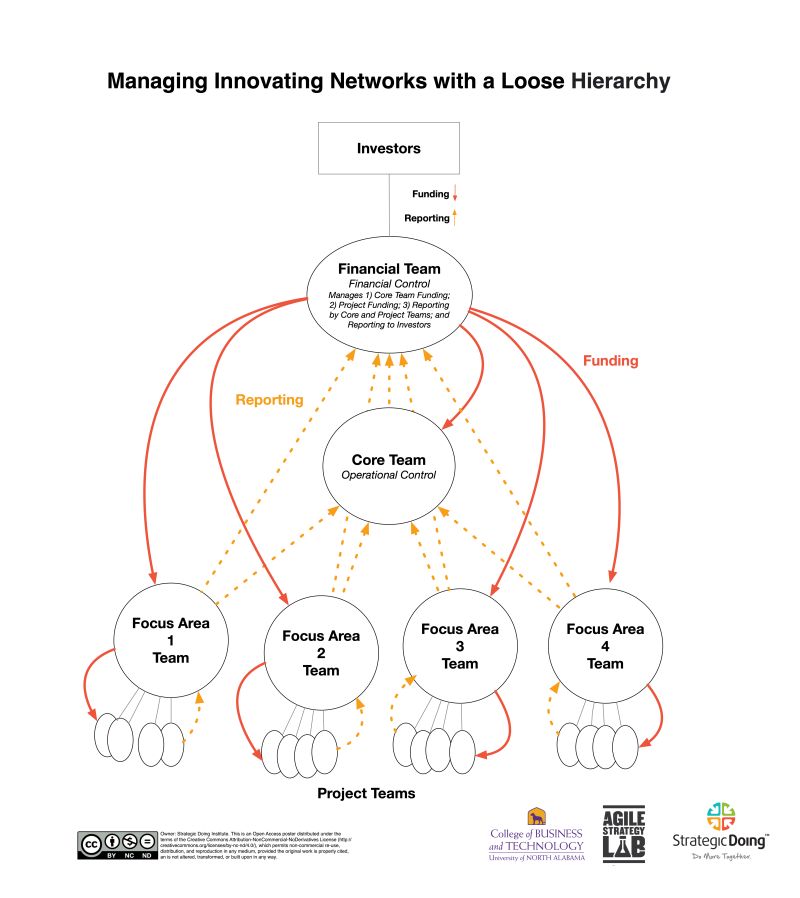Loose Hierarchies
MIT professor Thomas Malone wrote an important book, The Future of Work, nearly two decades ago. In it, he introduced “loose hierarchies,” a valuable concept lost mainly to practice. It’s time to resurrect it.
WHY IT MATTERS
Malone made the point that complex human activities can be organized in three primary ways: hierarchies, markets, and (sitting between these two) loose hierarchies.
You can think of loose hierarchies as “managed innovating networks” or “managed networks.”
Organizations and communities will develop solutions through managed networks as they confront wicked problems. It’s how we will collaborate to learn and adapt.
Malone’s concept of loose hierarchies provides the path to understand how our management principles need to shift.
DIG DEEPER: A PURDUE TESTBED FOR A MANAGED NETWORK
In 2005, Scott Hutcheson and I led a $15 million project funded by the federal government to encourage innovations in our archaic workforce development systems.
We organized our work as a “managed network”. The results were stunning.
We were one of 13 recipients of a $15 million award. In other words, we received 8% of the total money.
But when they added up the results of high level metrics across the 13 recipients, we generated 40% of the national results.
We demonstrated that a managed network can lead to remarkable improvements in innovation and productivity.
Many of the innovations that we launched in 2005 are thriving.
SOME PRINCIPLES TO FOLLOW
Here are some principles we developed from this testbed.
>> Continuously link, leverage, and align activities across the network
>> Use Strategic Doing as an operating system for the network
>> Separate financial and operational control
>> Organize strategic activities with three to five focus area teams
>> Vest innovation responsibility — ideation, experimentation, data collection, evaluation — in project teams
>> Core and financial teams agree on three to five high-level metrics across the network
>> Require each project team to define clear outcomes and progress metrics in their funding proposal
>> Make funding commitments based on principles of phased investments
>> Require each project team in their funding proposal to hypothesize how their innovation activity will move at least one of the high-level metrics
>> Follow a thirty-day cycle for reporting on all metrics
>> Rely on transparency in metrics reporting across the network to strengthen trust
>> Fund each project team on thirty-day cycles, contingent on reporting on progress metrics
>> Assign the core team members the responsibility for managing alignment and risks across the network
>> Core team members in each focus area the responsibility for investigating any problems arising from reporting by project teams
To learn more about our work in managed networks, reach out to me through our Agile Strategy Lab: https://lnkd.in/dJXe37Zp


The Founder of the Lab at UNA and co-author of Strategic Doing: 10 Skills for Agile Leadership, Ed’s work has focused on developing new models of strategy specifically designed to accelerate complex collaboration in networks and open innovation. He is the original developer of Strategic Doing.
